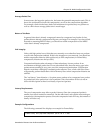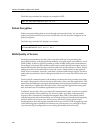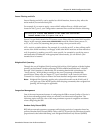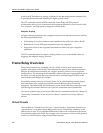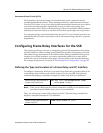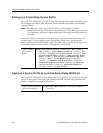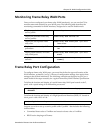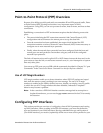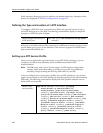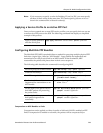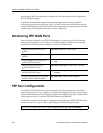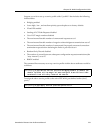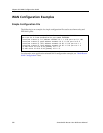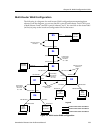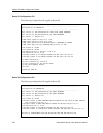
SmartSwitch Router User Reference Manual 327
Chapter 22: WAN Configuration Guide
Point-to-Point Protocol (PPP) Overview
Because of its ability to quickly and easily accommodate IP and IPX protocol traffic, Point-
to-Point Protocol (PPP) routing has become a very important aspect of WAN
configuration. Using PPP, you can set up router-to-router, host-to-router, and host-to-host
connections.
Establishing a connection in a PPP environment requires that the following events take
place:
• The router initializing the PPP connection transmits Link Control Protocol (LCP)
configuration and test frames to the remote peer to set up the data link.
• Once the connection has been established, the router which initiated the PPP
connection transmits a series of Network Control Protocol (NCP) frames necessary to
configure one or more network-layer protocols.
• Finally, when the network-layer protocols have been configured, both the host and
remote peer can send packets to one another using any and all of the configured
network-layer protocols.
The link will remain active until explicit LCP or NCP frames instruct the host and/or the
peer router to close the link, or until some external event (i.e., user interruption or system
time-out) takes place.
You can set up PPP ports on your SSR with the commands described in Chapter 32: “port
Commands” in the SmartSwitch Router Command Line Interface Reference Manual.
Use of LCP Magic Numbers
LCP magic numbers enable you to detect situations where PPP LCP packets are looped
back from the remote system, resulting in an error message. The use of LCP magic
numbers is enabled on the SSR by default; however, should you employ a service profile
in which the use of LCP magic numbers has been disabled, undetected “loopback”
behavior may become a problem.
Note:
In the event that a PPP WAN interface remains unrecognized at startup due to
loopback interference, you can use the ppp restart command in the CLI to remedy
the situation.
Configuring PPP Interfaces
This section provides an overview of configuring a host of WAN parameters and setting
up WAN interfaces. When working in the PPP environment, you must first define the
type and location of your WAN interfaces. Having established the type and location of
your WAN interfaces, you need to (optionally) define one or more service profiles for your



